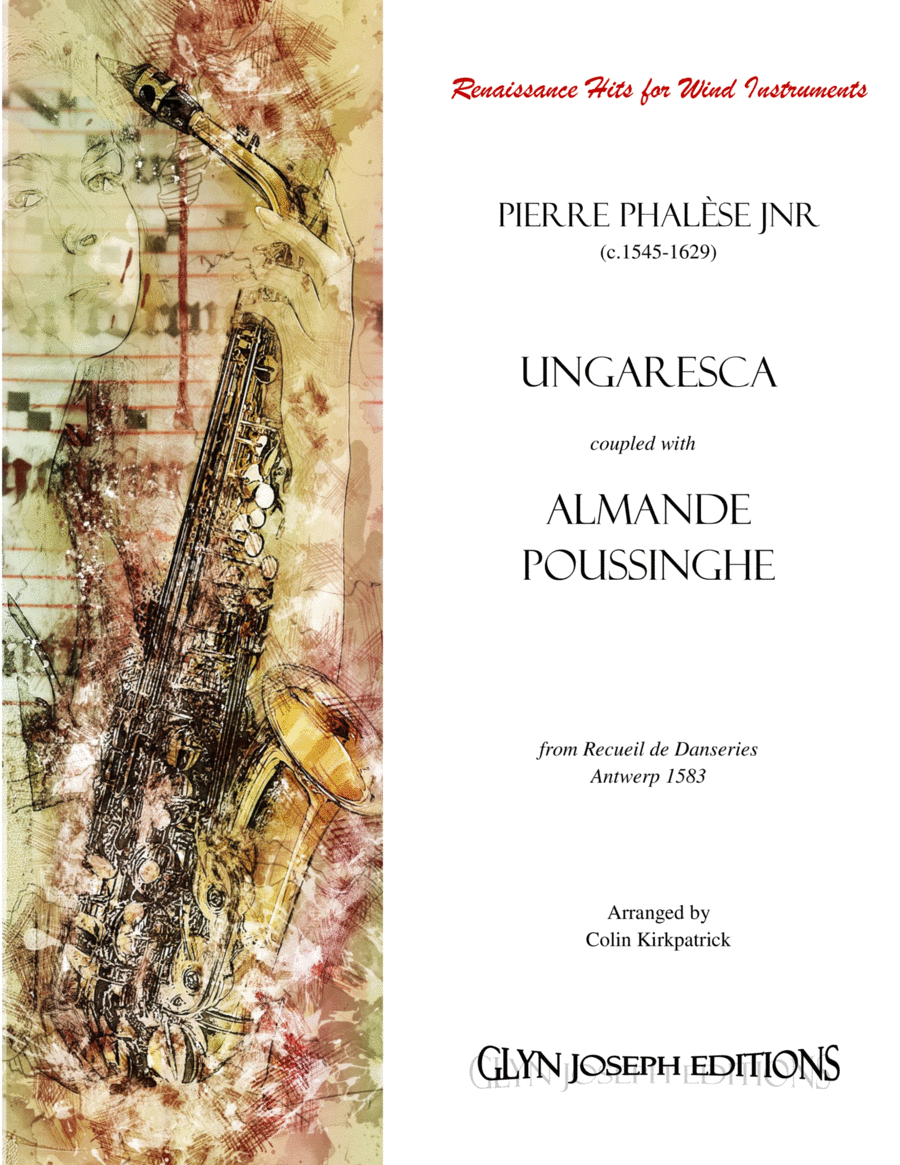Small Ensemble - Level 2 - Digital Download SKU: A0.522186 Composed by Unknown. Arranged by Colin Kirkpatrick. Christmas,Holiday,Renaissance. Score and parts. 27 pages. Colin Kirkpatrick Publications #6363609. Published by Colin Kirkpatrick Publications (A0.522186). These are two charming dances taken from a collection entitled Recueil de danseries, contenant presque toutes sortes de danses (âCollection of dances, containing almost all kinds of dancesâ) published in Antwerp in 1583 by Pierre Phalèse Jnr (c.1545-1629). He was continuing the work of his father Pierre Phalèse the Elder (1510-1575) the most important publisher in the Low Countries during the 16th century and who published his First Book of Dances in Leuven in 1571. The Antwerp publication of 1583 contains about half the dances from the original 1571 edition, together with some new titles, making a total of about seventy numbers.The 1583 collection contains a large selection of gaillardes, almandes and bransles which were all popular courtly dances of the time. The lively and well-known piece entitled Ungaresca appears on page 24 of the original publication. The drone accompaniment that Phalèse provides suggests the sound of the peasant bagpipes. The name Ungaresca is a term used outside Hungary to denote a dance in the Hungarian style and this particular one probably first appeared in a 1578 dance collection for viol consort - Mainerio's Primo libro de balli. As a result, the music is sometimes attributed to Mainerio.In this arrangement, Ungaresca is paired with the delightful Almande Poussinghe which appears on page 16 of the original. This wonderful music of the 16th century still speaks to us today and this arrangement would be an ideal concert item, playable by virtually any combination of conventional wind instruments with optional percussion and keyboard parts. The optional keyboard part enables you to use the piece as a solo or duet and trio for mixed instruments. Some minor changes have been made to the inner parts to facilitate performance.This 4-part arrangement is presented in a single PDF file which includes the Full Score; Part 1 (C, B flat, E flat); Part 2 (C, B flat, E flat); Part 3 (C, F, B flat, E flat), Part 4 (C, B flat, E flat); Keyboard and Percussion. Most electronic keyboards have a harpsichord option. The score and set of parts come in a single PDF file.
